Einführung
Bulldozers are essential machines in the construction and earthmoving industries. One of the critical factors influencing their performance is their weight. Understanding bulldozer weight and its impact on various aspects of operation can significantly enhance efficiency and productivity. This comprehensive guide will delve into the importance of bulldozer weight, offering tips for better operation and maintenance. By the end of this article, you will have a thorough understanding of how to optimize bulldozer weight for different applications, ensuring you get the best performance from your equipment.
The Importance of Bulldozer Weight

Why Bulldozer Weight Matters
Bulldozer weight is a crucial factor that affects several aspects of its operation. The weight of a bulldozer influences its traction, stability, fuel efficiency, and the ability to push and move materials. Heavier bulldozers generally provide better traction and stability, making them suitable for heavy-duty tasks and challenging terrains. However, the increased weight can also lead to higher fuel consumption and operational costs.
Key Factors Influenced by Bulldozer Weight
- Traction: Heavier bulldozers have better traction, reducing slippage and increasing efficiency on tough terrains.
- Stability: Increased weight improves stability, especially on uneven ground.
- Fuel Efficiency: Heavier machines tend to consume more fuel, impacting operational costs.
- Transportability: Heavier bulldozers are more challenging to transport, requiring specialized equipment.
Types of Bulldozers Based on Weight
Bulldozers can be classified into different categories based on their weight. Understanding these categories can help you choose the right machine for your specific needs.
Light Bulldozers
- Weight Range: 8,000 to 20,000 pounds
- Best For: Residential construction, landscaping, and small-scale projects
- Advantages: Easier to transport, lower operational costs
Medium Bulldozers
- Weight Range: 20,000 to 60,000 pounds
- Best For: Road construction, agriculture, and medium-scale earthmoving tasks
- Advantages: Balanced performance, versatility
Heavy Bulldozers
- Weight Range: 60,000 to 150,000 pounds
- Best For: Mining, large-scale construction projects, and heavy-duty earthmoving
- Advantages: Superior traction and stability, high productivity
Table: Comparison of Bulldozer Weight Categories
| Weight Category | Weight Range (pounds) | Typische Anwendungen | Advantages |
|---|---|---|---|
| Light | 8,000 to 20,000 | Residential construction, landscaping | Easier to transport, lower costs |
| Mittel | 20,000 to 60,000 | Road construction, agriculture | Balanced performance, versatility |
| Heavy | 60,000 to 150,000 | Mining, large-scale projects | Superior traction, high productivity |
Tips for Optimizing Bulldozer Weight
Choosing the Right Weight for the Job
Selecting the appropriate bulldozer weight for your project is essential to maximize efficiency and productivity. Consider the following factors when choosing a bulldozer:
Project Size and Scope
- Small Projects: Opt for light bulldozers for tasks like landscaping and residential construction.
- Medium Projects: Medium bulldozers are ideal for road construction and agricultural work.
- Large Projects: Heavy bulldozers are best suited for mining and large-scale construction projects.
Terrain and Soil Conditions
- Soft or Muddy Terrain: Heavier bulldozers provide better traction and stability.
- Rocky or Hard Terrain: Medium to heavy bulldozers are more effective.
Transportation and Accessibility
- Transport Requirements: Consider the logistics of transporting the bulldozer to the job site.
- Site Accessibility: Ensure the bulldozer can access the work area without difficulty.
Maintaining Optimal Bulldozer Weight
Maintaining your bulldozer at its optimal weight is crucial for consistent performance and longevity. Here are some tips to help you achieve this:
Regular Maintenance
- Engine and Hydraulic Systems: Keep these systems well-maintained to ensure the bulldozer operates efficiently.
- Track and Undercarriage: Regularly inspect and maintain to prevent excessive wear and tear.
Load Management
- Avoid Overloading: Do not exceed the bulldozer’s load capacity to prevent damage and maintain stability.
- Balanced Loads: Ensure materials are evenly distributed to avoid unnecessary strain on one side of the machine.
Enhancing Efficiency with Proper Weight Management
Efficient weight management can significantly impact your bulldozer’s performance. Implementing the following practices can help optimize efficiency:
Fuel Management
- Monitor Fuel Consumption: Keep track of fuel usage to identify any unusual spikes that may indicate maintenance issues.
- Efficient Operation: Train operators to use the bulldozer efficiently, minimizing fuel wastage.
Bedienerschulung
- Proper Techniques: Ensure operators are trained in proper techniques for handling and operating the bulldozer.
- Regular Training: Provide ongoing training to keep operators updated on best practices and new technologies.
Advanced Technologies and Their Impact on Bulldozer Weight

GPS and Telematics
Modern bulldozers are equipped with advanced technologies like GPS and telematics. These technologies can help optimize weight distribution and enhance overall efficiency.
Benefits of GPS and Telematics
- Precise Operation: GPS allows for precise control and operation, reducing material waste and improving productivity.
- Real-Time Monitoring: Telematics provide real-time data on bulldozer performance, helping identify issues before they become significant problems.
Automated Systems
Automated systems in bulldozers can enhance efficiency by optimizing weight distribution and improving control.
Advantages of Automation
- Consistent Performance: Automation ensures consistent performance and reduces operator fatigue.
- Increased Productivity: Automated systems can complete tasks faster and more accurately.
Abschluss
Understanding and optimizing Bulldozer weight is crucial for achieving better operation and efficiency in construction and earthmoving projects. By selecting the right weight category, maintaining your equipment properly, and leveraging advanced technologies, you can ensure that your bulldozer performs at its best. Implementing these tips will help you maximize productivity, reduce operational costs, and enhance the longevity of your bulldozer.
FAQ
What is the ideal bulldozer weight for residential construction?
For residential construction projects, light bulldozers weighing between 8,000 to 20,000 pounds are typically ideal due to their ease of transport and lower operational costs.
How does bulldozer weight affect fuel efficiency?
Heavier bulldozers tend to consume more fuel due to the increased effort required to move their weight. Managing load distribution and efficient operation can help mitigate some of these effects.
What maintenance practices are essential for optimizing bulldozer weight?
Regular maintenance of the engine, hydraulic systems, and undercarriage, as well as avoiding overloading, are essential practices for maintaining optimal bulldozer weight and performance.
Can advanced technologies improve bulldozer efficiency?
Yes, advanced technologies like GPS, telematics, and automated systems can significantly enhance bulldozer efficiency by optimizing weight distribution, providing real-time performance data, and ensuring precise operation.
What are the advantages of heavy bulldozers?
Heavy bulldozers offer superior traction and stability, making them suitable for challenging terrains and large-scale projects. They also provide high productivity due to their ability to handle significant loads efficiently.


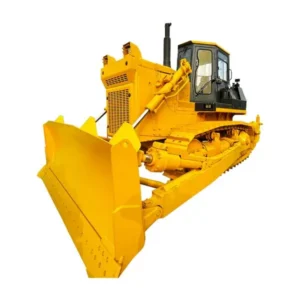
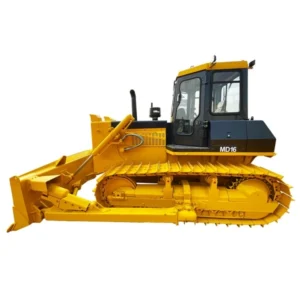
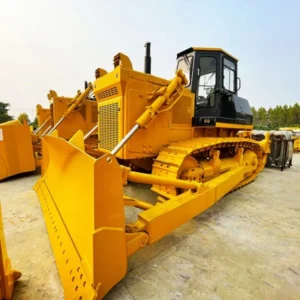
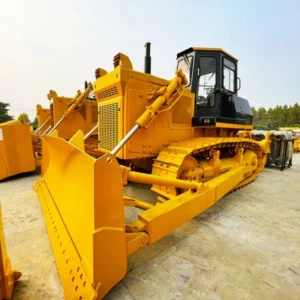
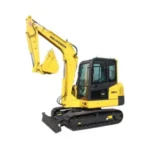

-150x150.webp)
